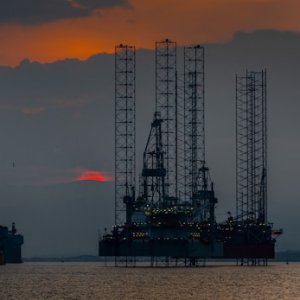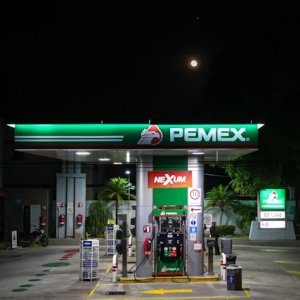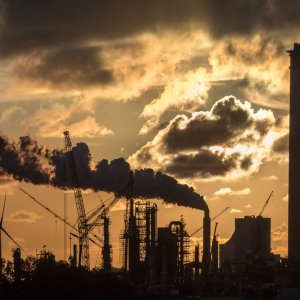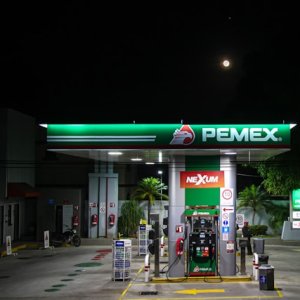Longtime Industry Ally Diversifies Portfolio

STORY INLINE POST
Q: What have been the most important developments over the last 12 months for Baker Hughes?
A: Since 2019, the company has been undergoing an important repositioning exercise. Since 2020, we have all learned to cope with COVID-19 and how to provide business continuity and manage the protection and health of our employees, as well as that of customers and suppliers during a very challenging year. Mexico is one of the few markets in the world that actually increased activity in the oil and gas sector at the peak of the pandemic. Although we have become used to pandemic protocols, we continue to manage a balance between the pandemic and the increase in oil and gas activity.
Q: What do you identify as the most crucial areas for development in the oil and gas value chain?
A: While we continue our activities in the upstream segment, along with our peers and competitors, we have also become very active in the development of the new Dos Bocas refinery. Baker Hughes is one of the largest, if not the largest, equipment supplier for this new refinery. We have been working very closely with PEMEX and with several of their EPC contractors in the supply of rotating equipment. This will support the startup, commissioning and long-term operation of the refinery.
Q: How would you distribute Baker Hughes’ upstream operations and interests in Mexico between shallow water, deepwater and onshore projects?
A: Deepwater has not been a focus of attention for the López Obrador administration but the private sector that is involved in deepwater is ramping up. However, most of our activity has been in shallow water. Of the millions of barrels that Mexico produces each day, over 90 percent of it today continues to be produced by PEMEX. This percentage is reflected in our project portfolio, despite the success of private operators in terms of early production phases.
Q: How does Mexico’s exploration success rate influence your efforts to invest in new upstream technologies and services?
A: The current administration’s focus on shallow water and onshore activities has provided us with the opportunity to continue deploying our existing technologies and services and new exploration activity has been quite strong. PEMEX is managing a very diversified portfolio of contractors that is balanced between all of our competitors in the marketplace. From an operational and functional perspective, Mexico’s exploration segment has been quite successful but there have been challenges on the financial side for contractors and service providers.
Q: How would you characterize the evolution of your relationship with PEMEX?
A: As a private foreign company with a strong presence in Mexico, Baker Hughes is aware that our views must never dictate policy but they must understand the objectives of the policy that the government is attempting to deploy, so that we can work with them as successfully as possible and achieve those objectives. This has been an important part of our relationship with PEMEX. Understanding their objectives is easier on our business segment since we come into the picture once it has determined which goods and services we can provide to them.
Q: How have you helped PEMEX increase its productivity while keeping its costs per barrel down?
A: First, we align ourselves with PEMEX in terms of their key performance indicators. PEMEX does a good job of monitoring those: time it takes to complete wells, time it takes to bring production online once completed, factors driving the presence and fluctuation of NPT. Once that has been defined, we offer packages with technologies and best practices to improve lifting costs and completion speeds. We can offer these resources, along with the right personnel, to maximize outputs and minimize detractions.
Q: How is Mexico growing as a market for new technologies that are part of its ongoing digital transformation?
A: Hydrocarbon activity in other major countries in the region dropped off quite a bit in 2020. This included Colombia, Argentina and Bolivia. Mexico did not. There was obviously an intentional strategy in Mexico. The industry here wanted to leverage the fact that it was a buyer in a buyer’s market and it paid off. PEMEX is open to new technologies probably within the same range of acceptability as any other oil and gas company of a comparable size. They study, pilot and deploy new technologies at a comparable rate like anyone else.
Q: What has been your contribution to the Dos Bocas refinery project?
A: The incoming administration had a vision that many were skeptical of but if you now visit the Dos Bocas site you will see that it is no longer a vision but a reality. There are well over 20,000 people working at the site, four large EPC contractors and many vendors providing all the components that will ultimately result in an operating refinery. The government is focused on speed; they want production to begin as early as possible, which makes sense from a CAPEX efficiency perspective and also from the perspective of the broader goal of energy self-sufficiency, in which all domestically produced oil is domestically refined. I am impressed by the conviction and dedication of the authorities in getting this project running. We are supplying around 30 different pieces of equipment for the project and the state-of-the-art nature of the project is really becoming a reality.
Baker Hughes is a leading energy technology company that designs, manufactures and services transformative technologies to help take energy forward. With operations in more than 120 countries, Baker Hughes works in partnership with its customers, wherever they are, to deliver better outcomes.








 By Pedro Alcalá | Senior Journalist & Industry Analyst -
Tue, 09/14/2021 - 11:20
By Pedro Alcalá | Senior Journalist & Industry Analyst -
Tue, 09/14/2021 - 11:20
















